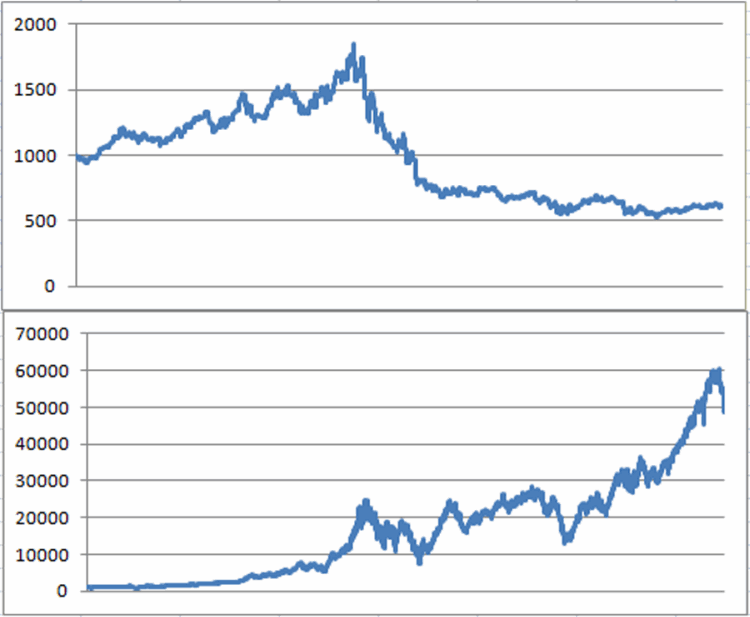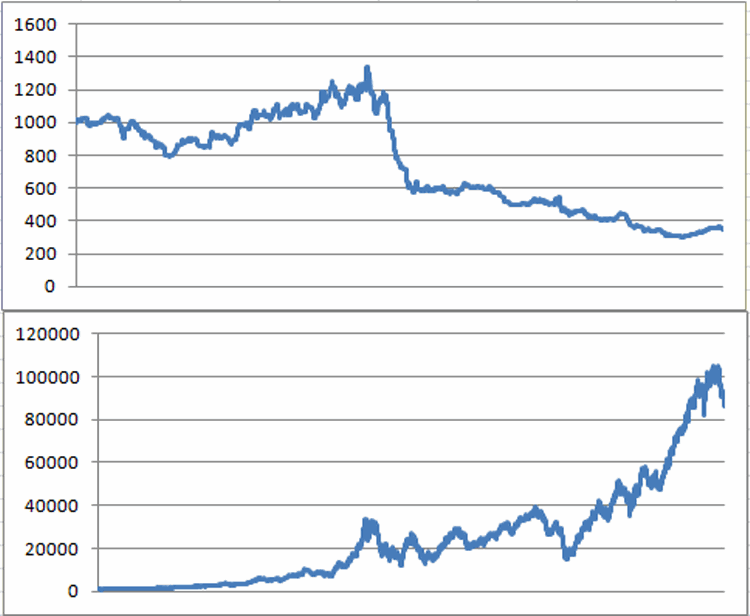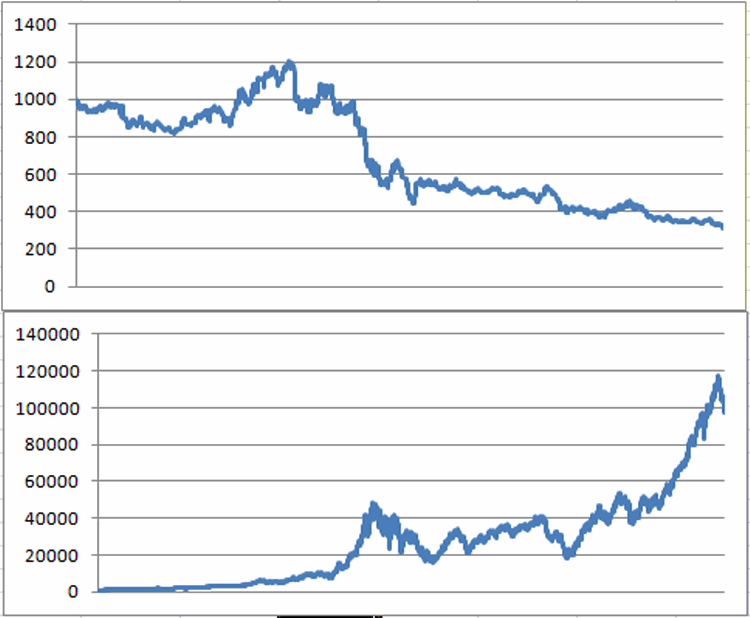Alright, I will admit that this one is a little “out there”, even by my highly flexible standards. As you may know I follow a lot of seasonal patterns and trends among various financial markets, indexes, commodities and even some individual stocks.
(See also Life Beyond Buy and Hold)
The good news regarding seasonal trends is that some of them have shown to be surprisingly (and amazingly) consistent. The bad news regarding seasonal trends is twofold:
1) There is never any guarantee that a given trend will work “this time around” (or even “ever again” for that matter).
2) Hence, a certain “leap of faith” is required in order to put real money at risk based solely on the date on the calendar
Trading Days of the Month
The stock market as a whole has showed a propensity to be more bullish during the first/last few days of the month (and also roughly mid-month) than during other days of the month. And although this idea was first popularized by Norman Fosback in his market classic “Market Logic” way back in 1975, this trend has persisted.
The same is true for many other stock market related securities. The one caveat to considering trading days of the month (TDM) is that one should put more faith in “clumps” of days that tend to rise (or fall) consistently than in random individual days. That being said, let’s turn our attention to semiconductor stocks. We will use Fidelity Select Electronics (FSELX) as our proxy for the sector and start our test on 10/3/1988.
For comparison sake, from 9/30/1988 through 8/24/15 $1,000 invested in FSELX grew to $29,518 (or +2,851.8%).
Trading Days 5, 6 and 7
The top clip in Figure 1 displays the growth of $1,000 invested in FSELX only during trading days #5, 6 and 7 every month since 1988. The bottom clip shows the results from investing in FSELX during all other days. Figure 1 – FSELX TDM 5, 6 and 7 (top clip) versus all other days (bottom clip); 10/3/88-8/24/15
Figure 1 – FSELX TDM 5, 6 and 7 (top clip) versus all other days (bottom clip); 10/3/88-8/24/15
*$1,000 invested only on TDM 5, 6 and 7 declined to $607 (-39.7%)
*$1,000 invested during all other days grew to $48,640 (+4,764)
Trading Days 13 and 14
The top clip in Figure 2 displays the growth of $1,000 invested in FSELX only during trading days #13 and 14 every month since 1988. The bottom clip shows the results from investing in FSELX during all other days. Figure 2 – FSELX TDM 13 and 14 (top clip) versus all other days (bottom clip); 10/3/88-8/24/15
Figure 2 – FSELX TDM 13 and 14 (top clip) versus all other days (bottom clip); 10/3/88-8/24/15
*$1,000 invested only on TDM 13 and 14 declined to $343 (-65.7%)
*$1,000 invested during all other days grew to $86,128 (+8,513)
Trading Days -7, -6 and -5
This requires a little explanation. For this sequence we start counting on the last trading day of the month which is TDM -1. So technically we are looking at the 6th, 5th and 4th from last trading day of the month. Also note that there can be overlap between TDM 13 or 14 and TDM -7, -6 and -5. But for now we are looking at each period separately.
 Figure 3 – FSELX TDM -7, -6 and -5 (top clip) versus all other days (bottom clip); 10/3/88-8/24/15
Figure 3 – FSELX TDM -7, -6 and -5 (top clip) versus all other days (bottom clip); 10/3/88-8/24/15
*$1,000 invested only on TDM -7, -6 and -5 declined to $314 (-68.6%)
*$1,000 invested during all other days grew to $97,743 (+9,674.3%)
Putting It All Together
Now at this point many serious students of the markets will shout “Curve Fitting.” And there is something to that. As a proud graduate of “The School of Whatever Works” I personally am rarely distracting by those charges. But I certainly respect each trader’s right to look skeptically at the results presented here. Still, the numbers are what they are. And just to make it interesting, let’s now put all three of the monthly periods together.
The following test assumes a lot of trading as follows:
*During TDMs 5, 6, 7, 13, 14, -7, -6 and -5 our system will be in cash.
*During all other day the system will hold FSELX
The results appear in Figure 4.
 Figure 4 – FSELX TDM 5, 6, 7, 13, 14, -7, -6 and -5 (top clop) versus all other days (bottom clip); 10/3/88-8/24/15
Figure 4 – FSELX TDM 5, 6, 7, 13, 14, -7, -6 and -5 (top clop) versus all other days (bottom clip); 10/3/88-8/24/15
$1,000 invested only on TDM 5, 6, 7, 13, 14, -7, -6 and -5 declined to $165 (-83.5%)
$1,000 invested during all other days grew to $179,058 (+17,805.8)
Figure 5 displays the results of the “System” versus buying and holding ticker FSELX.
 Figure 5 – FSELX avoiding TDM 5, 6, 7, 13, 14, -7, -6, -5 (blue) versus buy-and-hold (red); 10/3/88-8/24/15
Figure 5 – FSELX avoiding TDM 5, 6, 7, 13, 14, -7, -6, -5 (blue) versus buy-and-hold (red); 10/3/88-8/24/15
Summary
So is this just another crackpot curve-fit idea, or is there something to this? I leave you to decide for yourself. One important thing to note for anyone who is intrigued – you cannot actually use this “system” with ticker FSELX. If you were to try, after a very short time you would receive a very terse communication from the fine folks at Fidelity informing you, a) that they have very specific switching restrictions, b) that you are in violation of said restrictions and, c) that if you attempt to persist they may be required to send a few burly customer reps to your home and wrestle you to the ground before you can hit “Enter” to place your next trade. Or something to that effect.
Also, what about that -97.5% figure in the title?
Check back for Part II.
Disclaimer: OK, I made up part c) above. And I am a Fidelity investor.
Jay Kaeppel

